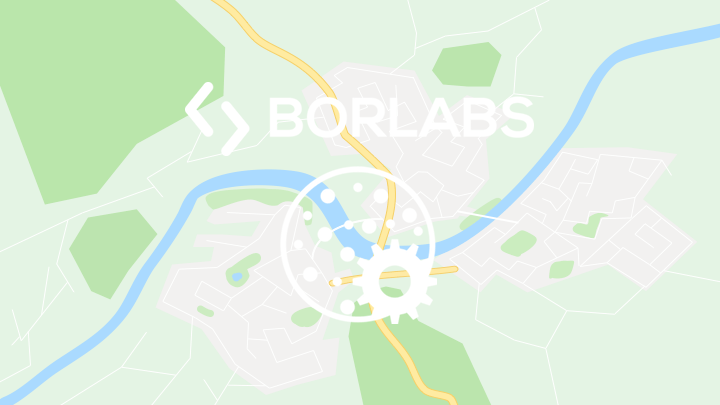
© Dorking Museum (K1020)
‘The composer must not shut himself up and think about art, he must live with his fellows and make his art an expression of the whole community –if we seek for art we shall not find it.’
The composer Ralph Vaughan Williams, although born in Gloucestershire, had strong Surrey connections throughout his long life. Even when he was not living near Dorking, he retained his close associations with the area. From 1874 he lived at the family home of Leith Hill Place (a few miles to the south of Dorking). He attended Charterhouse School in Godalming from 1887 to 1890 and thereafter as a student and young composer in London, was a frequent visitor to Dorking.
In 1928, Ralph and his wife Adeline took the decision to live near Dorking staying at Holmbury St. Mary and St. Paul’s Road before finally settling for a house off the Westcott Road. The White Gates remained their home until 1953, when after the death of Adeline, he moved to London on his marriage with Ursula Wood.
The first Leith Hill Musical Festival, founded by Evangeline Farrer and Margaret, Ralph’s sister took place in 1905. RVW (as Ralph became known) was the first festival conductor, which was a position he held until his retirement in 1953. Even after this, he appeared as a guest conductor until 1958, the year of his death. From its beginning his involvement with the Festival was considerable and in the years before and after the Great War he devoted time to rehearsing village choirs in the Dorking area.
Trail Directions
The trail starts at the Dorking Halls.
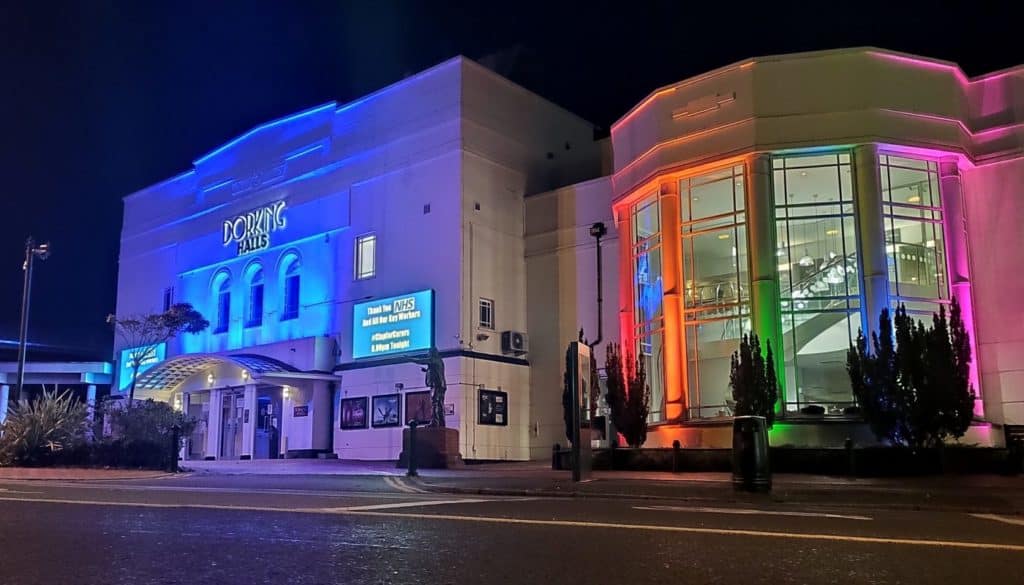
RVW was a prime mover in the provision of this venue. Opening its doors in 1931, Dorking Halls has since been home to the Leith Hill Musical Festival held annually in the spring. The Public Halls (G) and the Drill Hall (E) were former festival venues.
The bronze relief of the composer in the foyer, by David McFall, was unveiled by Sir Adrian Boult in 1961. A copy was placed in the porch of St. Martin’s Church later that year.
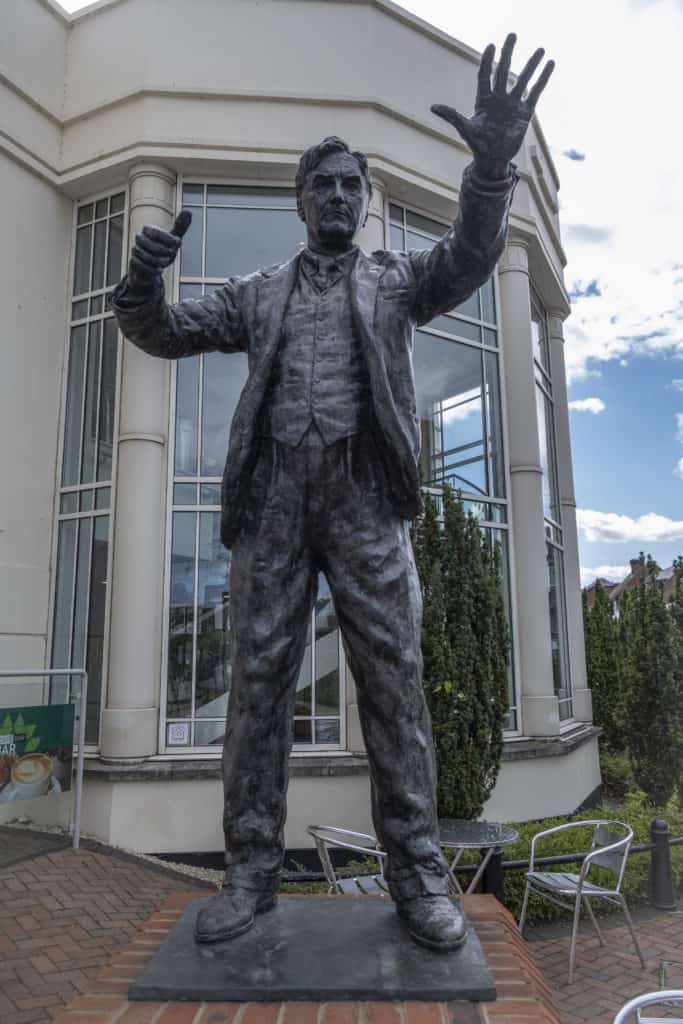
Photo courtesy of Lois Leyland
The statue outside the Halls depicts the composer in early middle age. It is by William Fawke and was unveiled by the composer’s widow Ursula, on 19th April 2001 (the first day of the annual Leith Hill Music Festival).
On leaving Dorking Halls (A) turn left and keep on the left of the High Street. In 175 metres is the Oddfellows Hall (B).
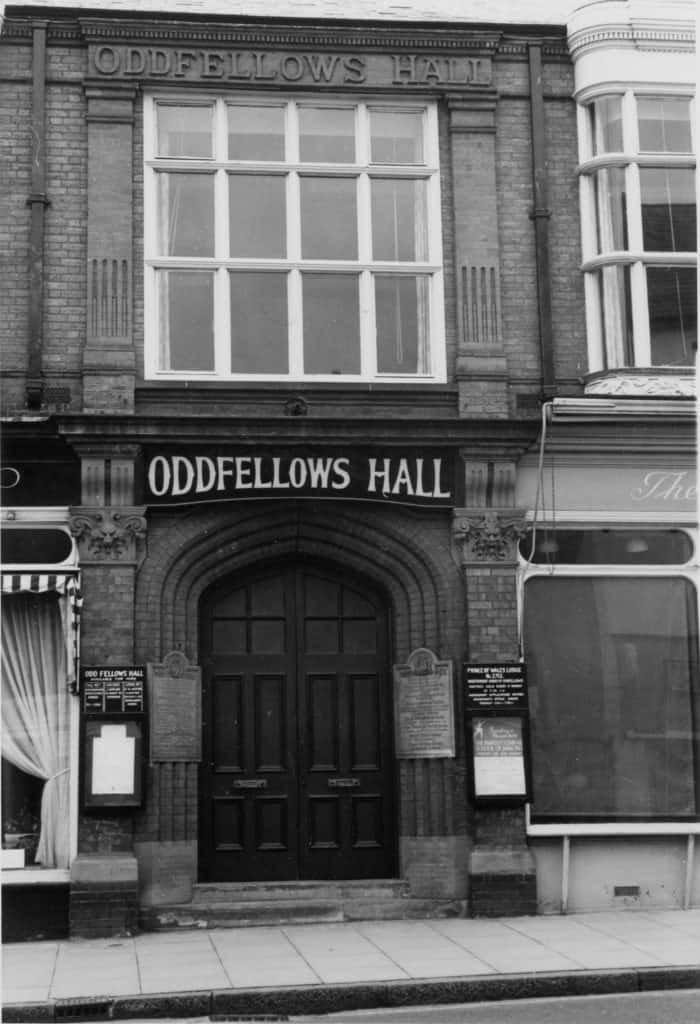
© Dorking Local History Group
The foundation of this hall was laid by Lord Ashcombe in 1894 and the hall itself, placed above the shops, was used by RVW for St. Matthew Passion rehearsals as well as for small concerts and recitals.
Continue in the same direction as above and in 170 metres, you will come to the White Horse (C).
C). The White Horse
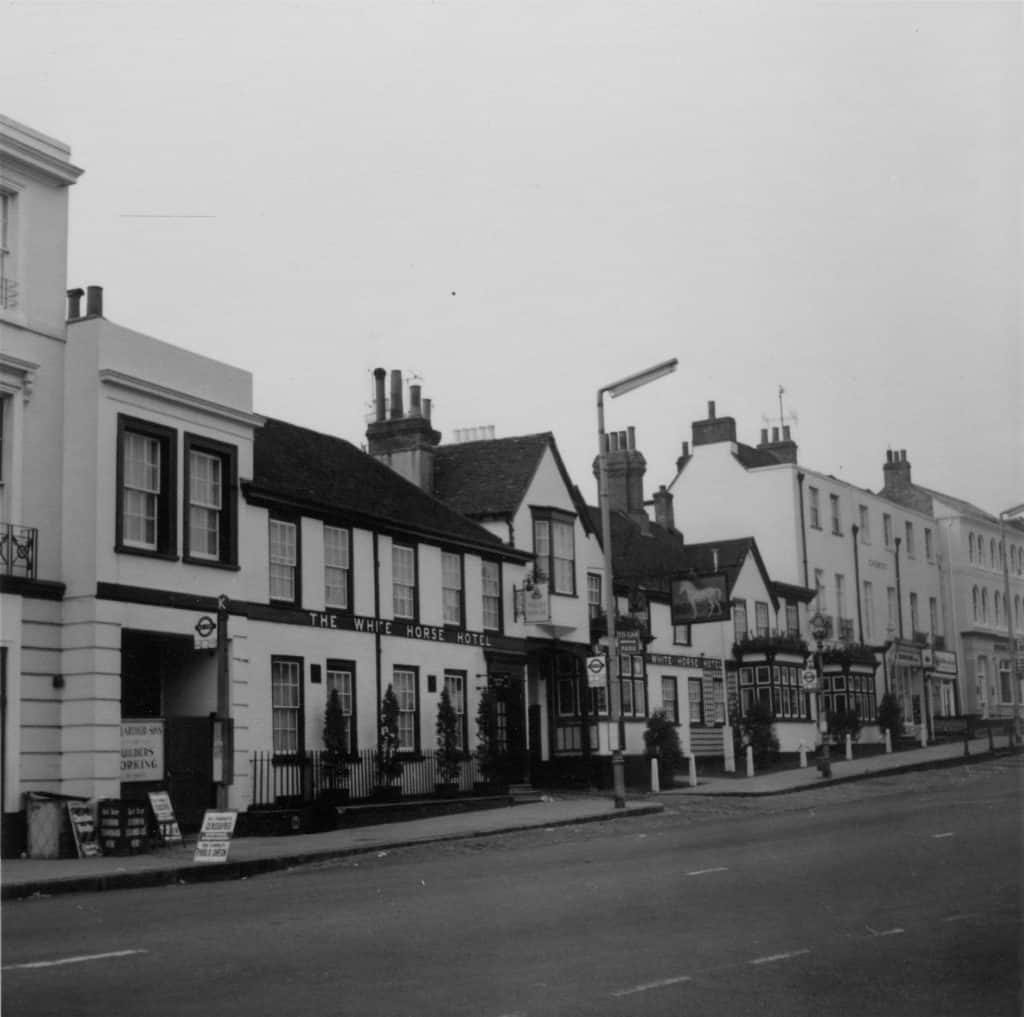
© Dorking Local History Group
Dating from the sixteenth century the White Horse became an inn two centuries later. During the Second World War, RVW threw himself into various cultural, social and fundraising activities, initiating at this inn a series of instrumental concerts entitled “An Informal Hour of Music” taking place on Wednesday afternoons. Young performers who were invited to play were able to gain experience and the music, often with entertaining and enlightening introductions by RVW, was able to divert its audience from the grimness of the war.
Continue in the same direction and cross the High Street at the next pedestrian crossing. Turn left once over the crossing and after 20 metres turn right into the Church Passage situated next to Barclay’s Bank. St. Martin’s Church (D) is straight ahead.
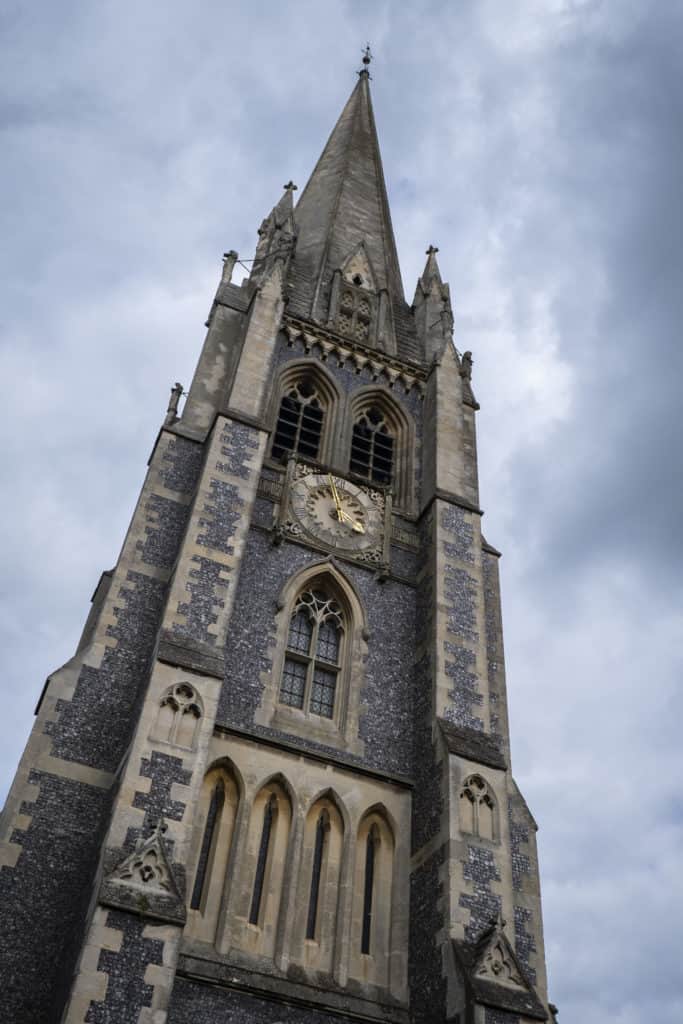
Photo courtesy of Lois Leyland
This grand Victorian town church is the third on the site. It was designed by Henry Woodyer and completed in 1877. RVW directed many concerts here during the Second World War, including performances by the Leith Hill Musical Festival massed choirs of the Bach “St. Matthew Passion” and other works.

Photo courtesy of the Ralph Vaughan Williams Society
In the porch is a copy of the David McFall bronze of RVW (see Dorking Halls). For RVW’s centenary in 1972 hassocks were designed and created for the Lady Chapel, each illustrating a different composition.
Turn right when leaving the church porch and walk about 250 metres to the end of Church Street. Cross Station Road on the traffic island in front of The Star pub and walk straight on keeping to the right pavement along to the end of West Street. After about 50 metres, turn right down Drill Hall Lane by Denbies View vets to the Drill Hall (E).
E). The Drill Hall
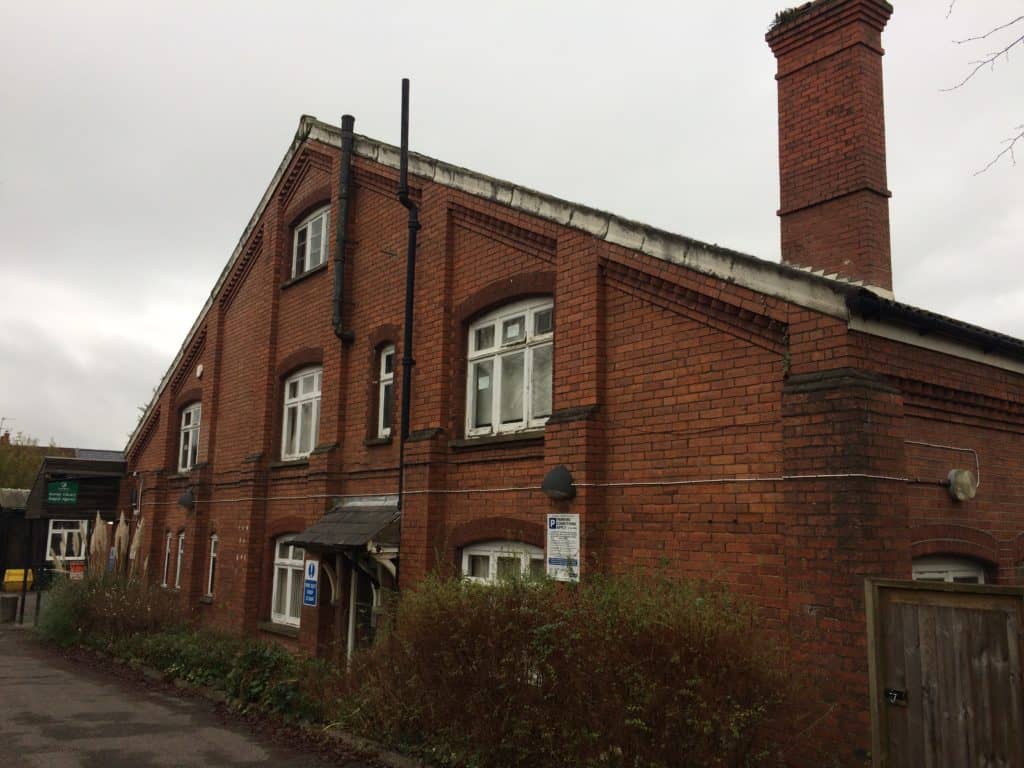
This was temporarily the home of the Leith Hill Musical Festival between 1922 and 1930 and is important for housing the premieres of three RVW compositions at the 1930 festival: Benedicite, Three Choral Hymns and the Hundredth Psalm. During these years, the hall was described as “The bright, if not always watertight, abode of song”.
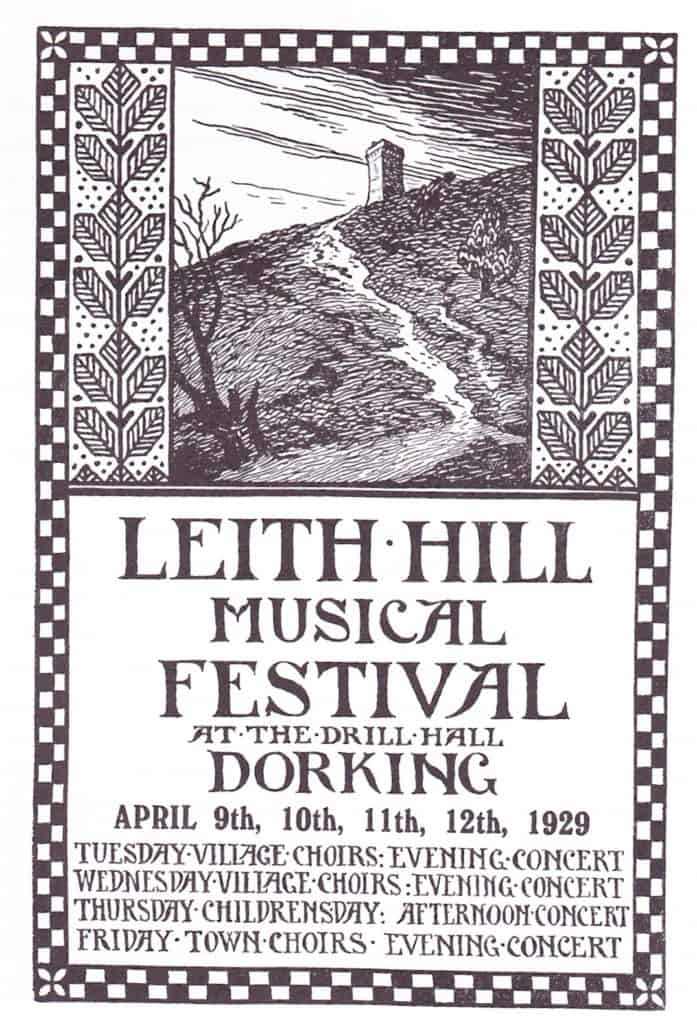
Image © Leith Hill Musical Festival
As suggested by its name, the hall was originally constructed for military training. It currently houses a unit of the County Library Service and is closed to visitors.
Return to the end of the lane and turn right into Westcott Road. Walk 120 metres and turn right into Nutcombe Lane. The site of The White Gates (F) is on the right, just before the next turning to the right, about 60 metres from Westcott Road.
F). The White Gates (please note Nutcombe Lane is a private road)
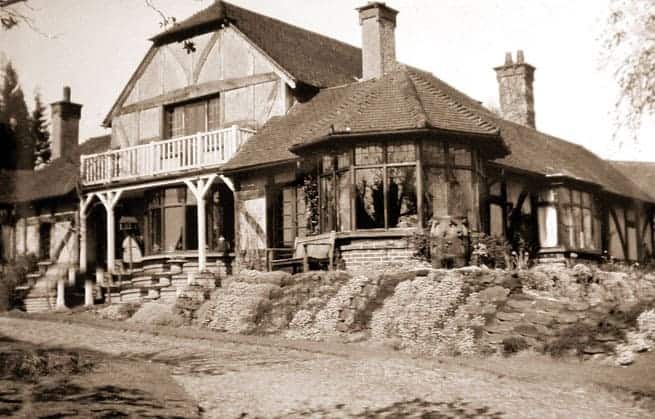
© Dorking Museum
Apart from the views and its general location, there is regretfully now nothing to see of RVW’s former home (1929-1953) as the building was demolished in 1964 and the site completely redeveloped.
It was here that RVW composed some of his most significant works, including Job, Symphonies 4, 5, 6 to 7, Serenade to Music, Five Tudor Portraits and the Pilgrim’s Progress.
Dr. William Cole who bought the house from RVW in 1954, describes The White Gates: “supposedly built as a summer residence for a business man who had made money out of the 1914-1918 war. It was a large one storey house with a corridor around the large central room, which was used as a lounge/dining/music room. It was large enough to take a choir of 50 with ease. It had a timbered ceiling with a queen post roof, which was 30 feet high, A gallery all round was a useful place for bookcases and for storing music. It had only one window, a huge bay window at the western end , which because of its height was able to light the whole of the room. The only other room of interest was Dr. Vaughan Williams’ study, a room on the south-west corner of the house which had a large almost circular bay of 12 windows. In this room, Dr. Vaughan Williams had his desk and an upright piano. This is where he worked regularly every day.”
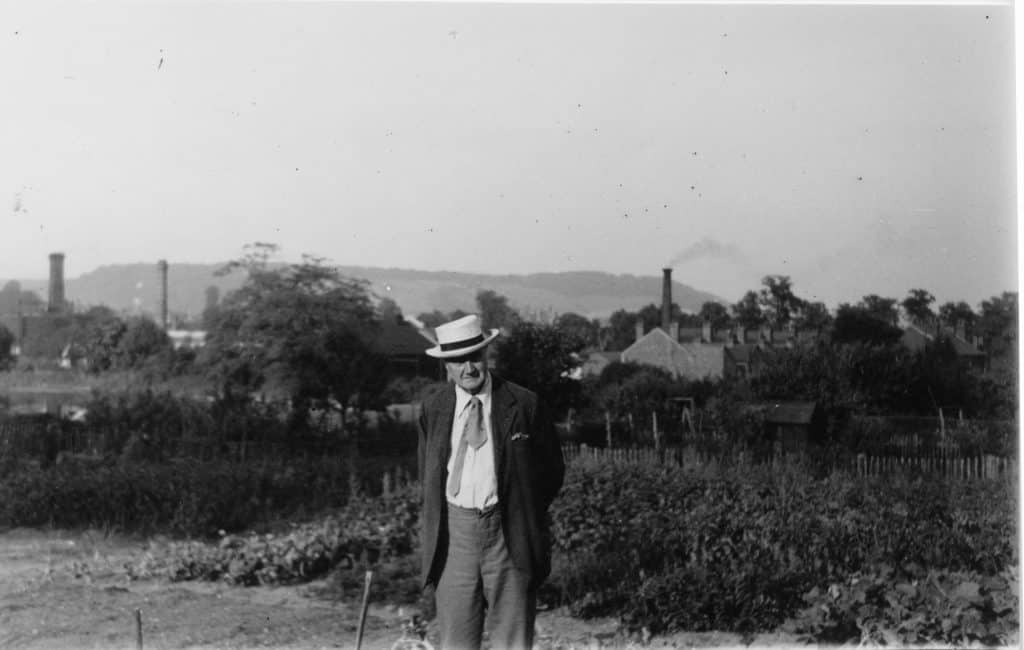
© Dorking Museum K977
The gardens were quite extensive and included an orchard and tennis court.
Return to The Star and along West Street. The Public Hall (G) is the first large building on the right, set slightly back from the road.
G). The Public Hall
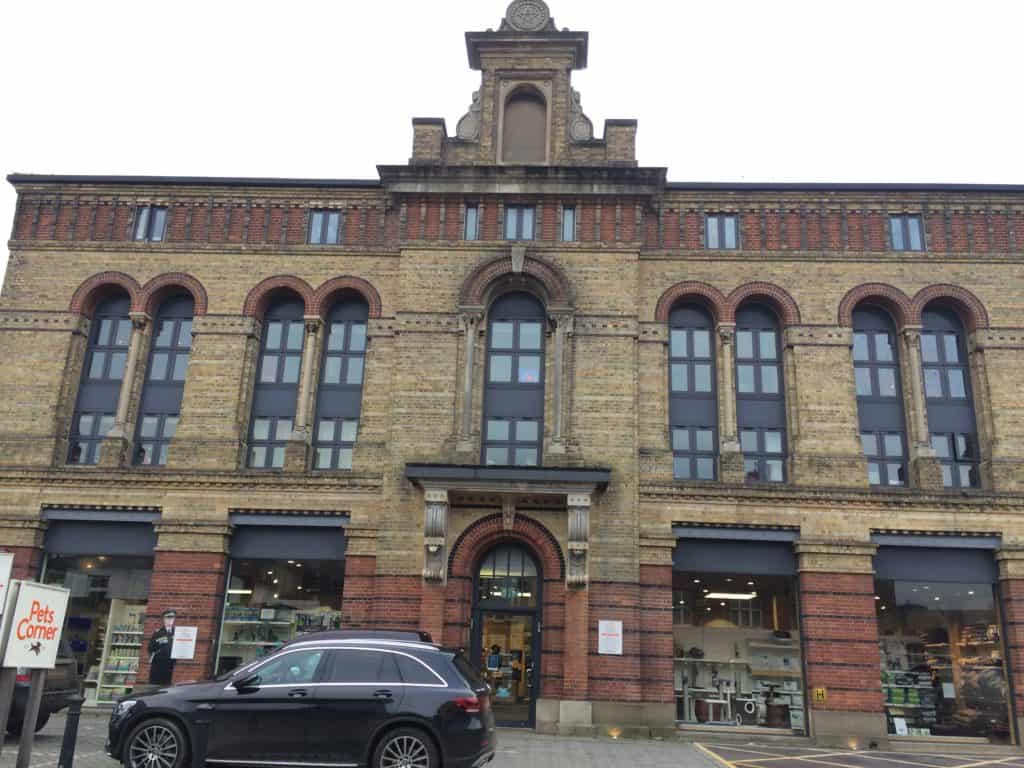
This distinctive yellow and red brick building, originally constructed in 1871-2 as a public hall, was the original venue of the Leith Hill Musical Festival. It was here on 10th May 1905 that RVW directed the first combined concert.
The hall housed the Festival until its suspension during the First World War and saw further events in 1920 and 1921 before the Festival moved to the Drill Hall. The Hall has served many uses over the years including housing the Fire Brigade, acting as a cinema, the County Library Headquarters. It is now been developed for retail unit with housing above.
Continue along West Street for 130 metres. Turn left into the alley just after the Mayflower Spa. Dorking Museum and Heritage Centre is straight ahead.
H). Dorking Museum and Heritage Centre
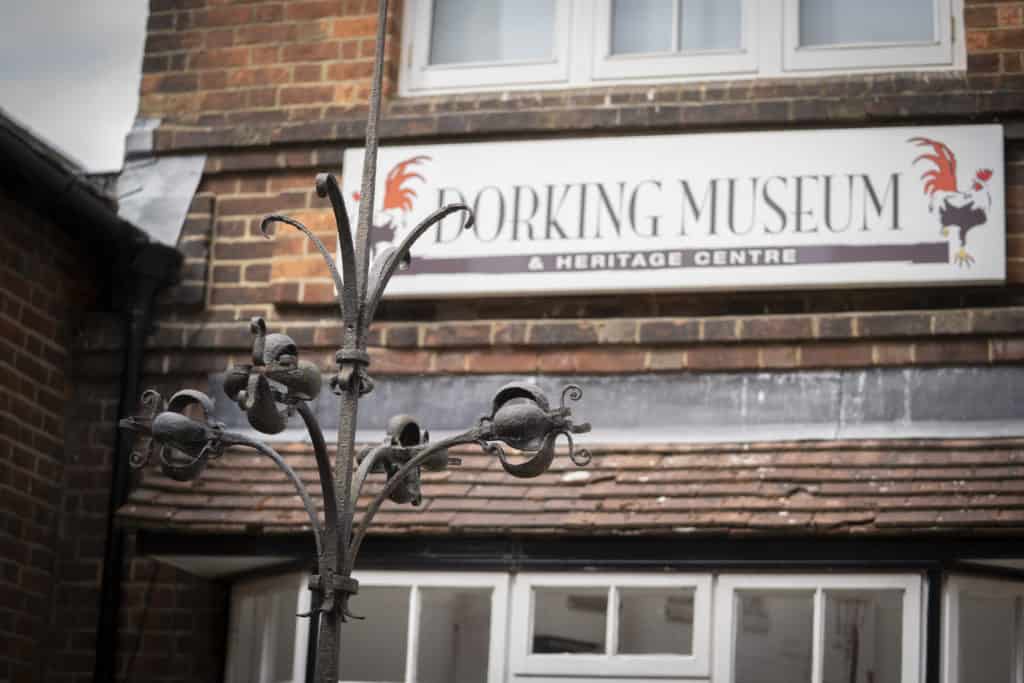
Photo courtesy of Lois Leyland
As well as containing fascinating collections of material relating to Dorking’s past, the Museum and its library house documents and photographs relating to the Leith Hill Musical Festival, RVW and his connection with the area.
RVW was chairman and later president of the Dorking and Leith Hill Preservation Society for most of the 1940’s, reflecting his strong interest in and involvement with the local community in non-musical activities as well as musical ones. The creation of the Museum was one of the fruits of the Society’s labours.
Trail Directions
On leaving Dorking Halls (A) turn left and keep on the left of the High Street. In 175 metres is the Oddfellows Hall (B).
Continue in the same direction as above and in 170 metres, you will come to the White Horse (C).
Continue in the same direction and cross the High Street at the next pedestrian crossing. Turn left once over the crossing and after 20 metres turn right into the Church Passage situated next to Barclay’s Bank. St. Martin’s Church (D) is straight ahead.
Turn right when leaving the church porch and walk about 250 metres to the end of Church Street.
Cross Station Road on the traffic island in front of The Star pub and walk straight on keeping to the right pavement along to the end of West Street. After about 50 metres, turn right down Drill Hall Lane by Denbies View vets to the Drill Hall (E).
Return to the end of the lane and turn right into Westcott Road. Walk 120 metres and turn right into Nutcombe Lane. The site of The White Gates (F) is on the right, just before the next turning to the right, about 60 metres from Westcott Road.
Return to The Star and along West Street. The Public Hall (G) is the first large building on the right, set slightly back from the road.
Continue along West Street for 130 metres. Turn left into the alley just after the Mayflower Spa. Dorking Museum and Heritage Centre is straight ahead.
Thank you to Mole Valley District Council for letting us reproduce their original trail leaflet.
Five miles out of Dorking on Leith Hill are two more places associated with RVW.

Christ Church, Coldharbour
Christ Church, Coldharbour near Dorking is where Vaughan Williams’s parents were married in 1868. It is a short distance from VW’s childhood home, Leith Hill Place. The organ at which VW practised from time to time is still in use. The graveyard contains a family plot where Vaughan Williams’s brother Hervey and his mother, Margaret are buried.
Photograph and text courtesy of the Ralph Vaughan Williams Society
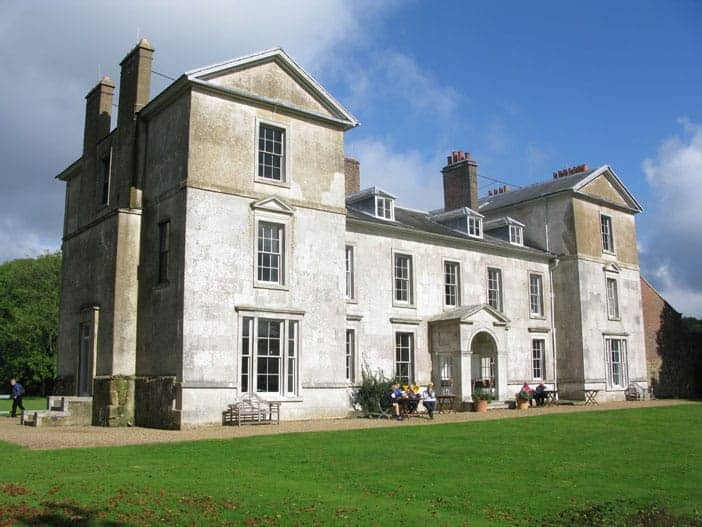
Leith Hill Place, Holmbury St. Mary
Leith Hill Place was the childhood home of Ralph Vaughan Williams, who gave it to the National Trust in 1945. His grandparents, Josiah Wedgwood III and Caroline (née Darwin) moved here in 1847 and his great uncle, the famous naturalist Charles Darwin, conducted experiments in the grounds. The piano on which VW composed among others, The Lark Ascending is on display as well as a small display of artifacts. Leith Hill Place was gifted to the National Trust by the composer in 1945 and is open to the public.
Photo courtesy of the Ralph Vaughan Williams Society

